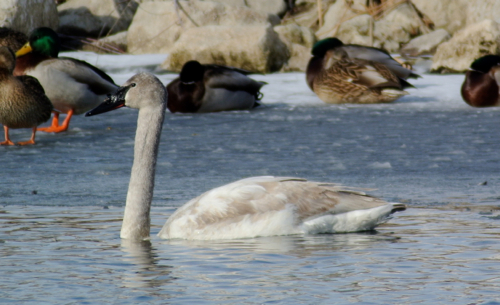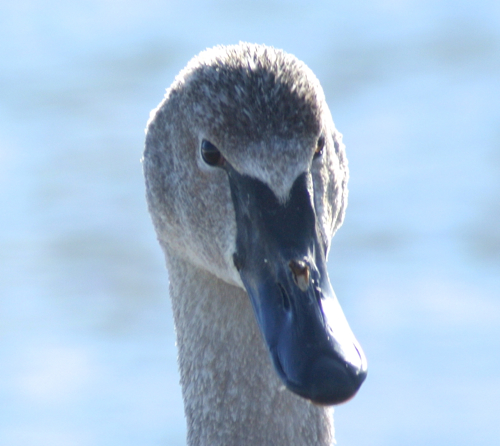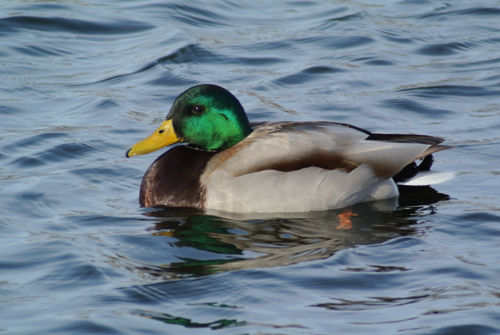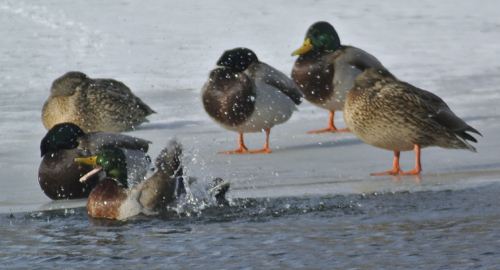I have my first post up over at 10,000 Birds.

When I was at Lake Vadnais last week looking for the long-tailed-duck, I took advantage of the close up trumpeter swans to get some swan shots. Note the swan in the back. I was watching that one and noticed it was a wee bit smaller than the two in front. After the preening, the swans started dipping for vegetation.

The swan in back came closer to the other two and side by side, it was noticeably smaller (the smaller swan is the one on the right). Was this a female? In swans, females are smaller than males. Or...was this a tundra swan mixed in with the trumpeter swans?

They both popped up at the same time and look at that--the smaller bird has a touch of yellow on its beak--it was a tundra swan! Tundra swans nest in the tundra, not in Minnesota. They are in the midst of their migration and this time of year, hundreds can be seen flying over on their way to the coasts for the winter. Trumpeter swans nest in Minnesota and many will end up staying here for the winter, wherever they can find open water, many in Monticello.

It was fun to have an opportunity to really get a close look at the difference between the two swan beaks. Above is the trumpeter swan (with a little white feather stuck on the beak)--all black, no yellow. It's also a little bit of a bigger beak compared (up close) to a tundra swan. It's hard to tell them apart at a distance. If you can hear the call it's a no brainer. Here is a trumpeter swan call (like a kid playing a toy trumpet). But if your driving and it's during migration and you see a flock of swans fly over--how can you tell. I've heard some say that if you see a huge flock of 50 or more birds high up, chances are good it's a flock of tundra swans. If it's a small family group of 3 - 5 flying low, it's probably trumpeter swans.

Here's an up close of the tundra swan beak--with the little bit of yellow right in front of the eye. This is a tundra swan call. This bird would do a periodic bark, but I'm used to hearing a whole huge flock with they migrate, so it sounded strange.

Since I saw my first tundra swan in the Twin Cities last week, I figured I'd get to see them on my surveys on Monday and sure enough, there are tundra swans gathering on the Mississippi River. We found some on Pools 4 - 7. I'm sure there are a few trumpeters mixed in, but not really an easy way to separate them from the mostly tundras. If you have never seen the tundra swan migration in this area, you should really check it out. You can get info from Alma, Wisconsin but a great spot to view them for the next two weeks will be at the viewing platform in Brownsville, MN. You should get some other species too. This week we had lots of canvasbacks, buffleheads and ring-necked ducks--just to name a few.












